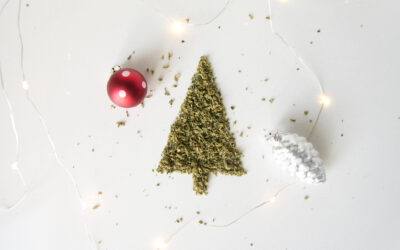In the ever-evolving landscape of cannabis consumption, the terminology surrounding various products can be as hazy as the smoke produced. Three terms that often find themselves at the center of this smoky confusion are concentrates, extracts, and dabs. While they all fall under the broad umbrella of cannabis derivatives, each has its own distinct characteristics, production methods, and effects. Here’s what they all mean.
Concentrates
Let’s start with concentrates. These are essentially the essence of the cannabis plant, where the goal is to isolate the most desirable compounds, like cannabinoids and terpenes, while minimizing the presence of unwanted elements such as plant material. The result is a concentrated form of cannabis that packs a potent punch. Concentrates come in various forms, including hash, kief, and oils.
Hash, one of the oldest and most traditional concentrates, is created by compressing trichomes (those tiny, resinous glands on the cannabis plant) into a solid form. Kief, on the other hand, is essentially the accumulation of trichomes that fall off the plant and are collected as a fine, powdery substance. Both hash and kief can be sprinkled on top of a bowl of flower or used as a base for edibles.
Extracts
Moving on to extracts, this term refers to a broader category of concentrated cannabis products that are created using a solvent-based method. Solvents like butane or CO2 are used to strip away the cannabinoids and terpenes from the plant material, leaving behind a highly potent substance. This process allows for more precise control over the final product’s composition and potency.
Dabs
Now, let’s delve into the world of dabs. Dabbing is a method of consuming concentrates or extracts by vaporizing them using a hot surface, often a nail or banger. The concentrated cannabis is applied to the hot surface, turning it into a vapor that is inhaled. Dabbing has gained popularity for its ability to deliver a rapid onset of effects and intense highs.
So, in essence, while all dabs are concentrates or extracts, not all concentrates or extracts are necessarily dabs. It’s a bit like the squares and rectangles scenario—dabs are a specific type of concentrate or extract, but not all concentrates or extracts are meant for dabbing.
When it comes to choosing between these forms of cannabis, it often boils down to personal preference, desired effects, and the method of consumption. Concentrates, including hash and kief, are versatile and can be easily incorporated into various consumption methods. Extracts, with their higher potency, are favored by those seeking a more intense experience. Dabbing, as a method, provides a swift and efficient way to feel the effects of cannabis without the need for combustion.
But it’s not just about the potency; terpenes play a crucial role too. These aromatic compounds contribute to the distinctive flavors and aromas of different cannabis strains. Concentrates and extracts, when crafted with care, can preserve these terpenes, offering a more flavorful and nuanced experience compared to traditional flower consumption.
What is the better option?
In the end, the difference between concentrates, extracts, and dabs lies in their production methods, potency, and consumption techniques. Whether you’re a seasoned cannabis enthusiast or a curious newcomer, understanding these distinctions can empower you to make informed choices that align with your preferences and desired effects. Just remember, it’s not just about what you’re smoking; it’s about how you’re experiencing the rich and diverse world of cannabis derivatives.




